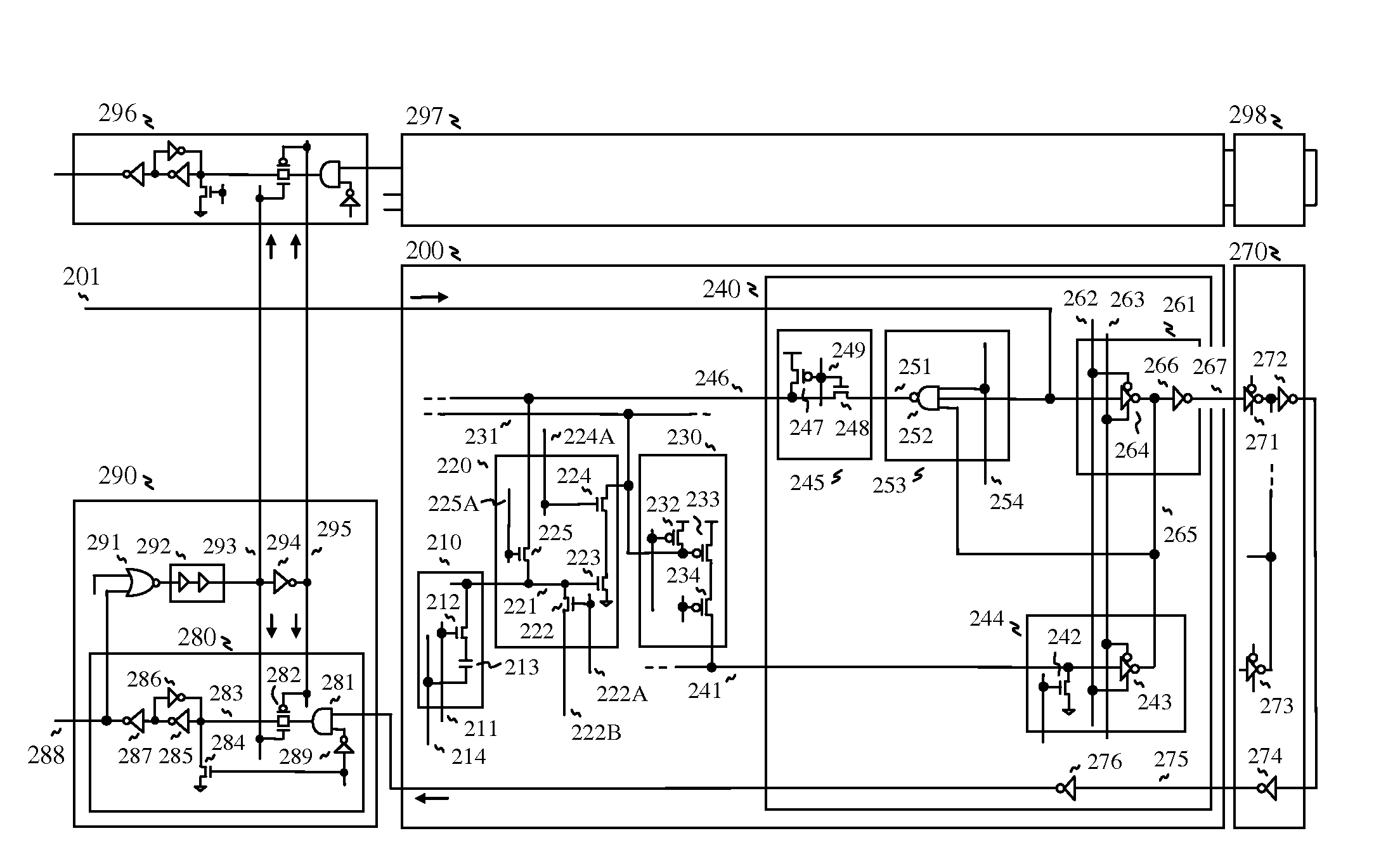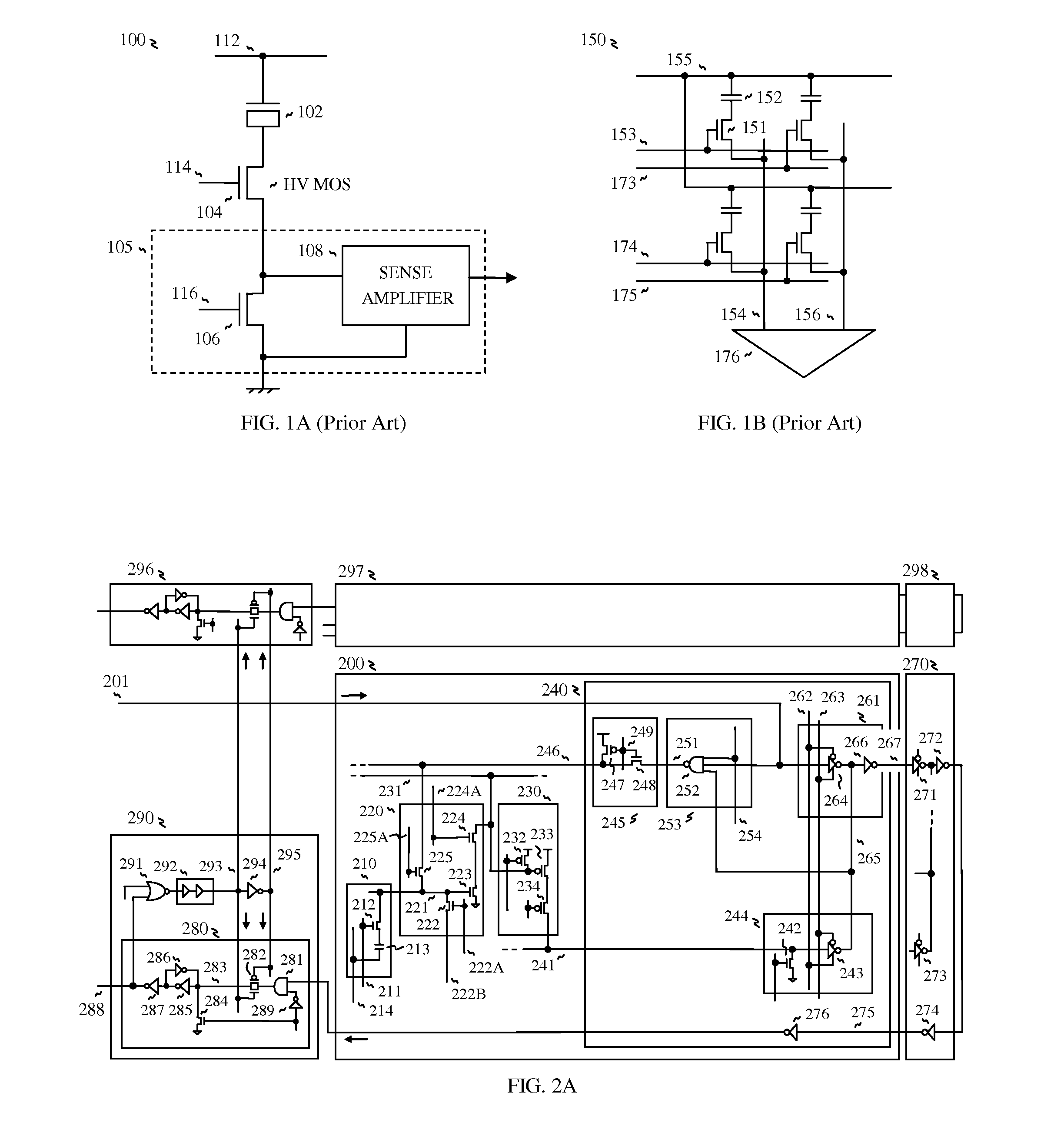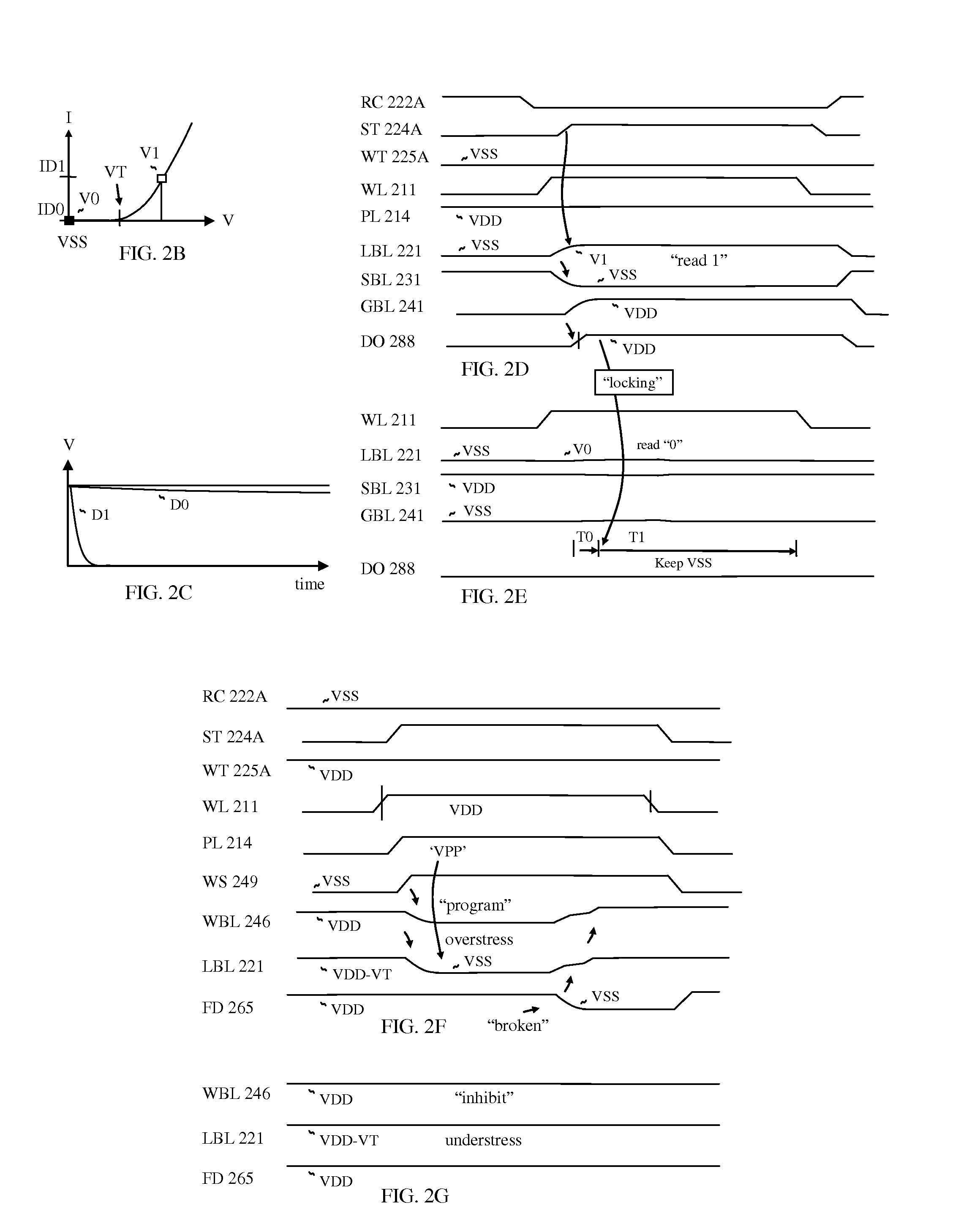[0009]For realizing high speed read operation for the OTP memory, bit line is multi-divided, which reduces
parasitic capacitance, so that the divided bit line is quickly charged when reading and multi-stage sense amps are used for connecting divided bit line, wherein the multi-stage sense amps are composed of dynamic circuits for realizing fast access and eliminating penetration current when reading. More specifically, the multi-stage sense amps include a first
dynamic circuit serving as a local sense amp, a second dynamic circuit serving as a segment sense amp, and a first tri-state
inverter serving as an amplify circuit of a global sense amp, while a second tri-state
inverter is used for bypassing an output from a previous
memory block, which configures a data transfer circuit. The dynamic circuits are also useful to reduce
operating voltage for realizing low
power consumption, because the dynamic circuits are turned on around
threshold voltage of MOS
transistor for detecting whether the amplify circuit is turned on or not by a selected memory
cell. With multi-stage sense amp, fast read operation is realized because each sense amp drives a lightly loaded and divided bit line, such that the memory
cell drives the lightly loaded local bit line, the local sense amp drives a segment bit line for transferring a read output to the segment sense amp, the segment sense amp drives a global bit line for transferring the read output to the global sense amp, and the global sense amp drives a very lightly loaded common node of the data transfer circuit for transferring the read output to an output latch circuit.
[0011]And, amplifying transistors of the sense amps are composed of relatively long channel transistors, in order to reduce turn-off current, which reduces
power consumption.
[0013]Furthermore, configuring the memory is more flexible, such that number of sense amps can be determined by the target speed. For example, high speed application needs more segmented array with more sense amps, while
high density application needs more memory cells with reduced number of sense amps, thus cell efficiency is increased.
[0016]More specifically, a reference
signal is generated by one of fast changing data with high
gain from reference cells, which
signal serves as a reference
signal to generate a locking signal or a read duration
control signal in order to reject latching another data which is slowly changed with
low gain, such that
high voltage data is arrived first while
low voltage data is arrived later, or
low voltage data is arrived first while
high voltage data is arrived later depending on configuration. The
time domain sensing scheme effectively differentiates
high voltage data and
low voltage data with time
delay control, while the conventional sensing scheme is current-domain or
voltage-domain sensing scheme. In the convention memory, the selected memory cell discharges the local bit line, and the discharged voltage of the local bit line is compared by a
comparator which determines an output at a time. There are many advantages to realize the
time domain sensing scheme, so that the sensing time is easily controlled by a tunable
delay circuit, which compensates cell-to-cell variation and
wafer-to-
wafer variation, such that there is a need for adding a
delay time before locking the latch circuit with a statistical data for all the memory cells, such as mean time between fast data and slow data. Thereby the tunable delay circuit generates a
delay time for optimum range. And the read output from the memory cell is transferred to the latch circuit through a returning read path, thus the
access time is equal regardless of the location of the selected memory cell, which is advantageous to transfer the read output to the external pad at a time.
[0017]When
programming the memory cell, the multi-stage sense amp serves as a current
detector to
cut off a current path after blown. In doing so, data pattern sensitivity is reduced when programming. Without the current
detector circuit, maximum current flows when programming all “1” (blown) or no current flows when programming all “0” (not blown).
[0018]Furthermore, the memory cell can be reduced because the memory cell only drives a lightly loaded local bit line when reading, and also the current flow of the pass
transistor can be reduced, which means that the memory cell can be miniaturized further. Moreover, the present invention realizes multi-stacked memory
cell structure including
thin film transistor because the memory cell only drives lightly loaded bit line even though thin film polysilicon
transistor can flow lower current, around 10 times lower, for example.
 Login to View More
Login to View More  Login to View More
Login to View More 


